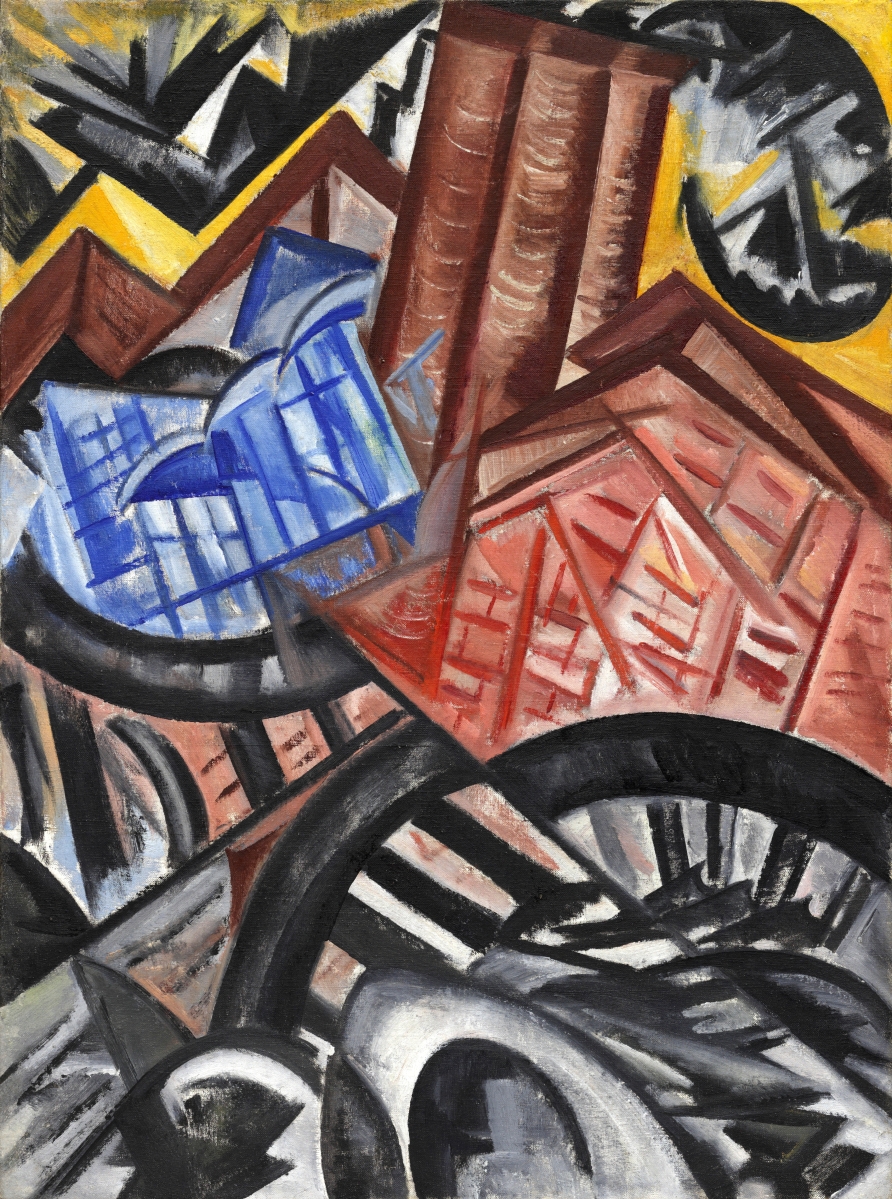
El Lissitzky (Russian, 1890–1941), “Proun 19D,” 1920 or 1921; gesso, oil, varnish, crayon, colored papers, sandpaper, graph paper, cardboard, metallic paint and metal foil on plywood, 38- by 38¼ inches. The Museum of Modern Art, New York. Katherine S. Dreier Bequest.
NEW YORK CITY – The Museum of Modern Art presents “A Revolutionary Impulse: The Rise of the Russian Avant-Garde,” an exhibition that brings together 260 works from MoMA’s collection, tracing the arc of a period of artistic innovation between 1912 and 1935. The exhibition is on view through March 12 in the South Gallery on the third floor.
Planned in anticipation of the centennial year of the 1917 Russian Revolution, the exhibition highlights breakthrough developments in the conception of Suprematism and Constructivism, as well as in avant-garde poetry, theater, photography and film, by such figures as Alexandra Exter, Natalia Goncharova, El Lissitzky, Kazimir Malevich, Vladimir Mayakovsky, Lyubov Popova, Alexandr Rodchenko, Olga Rozanova, Vladimir and Georgii Stenberg and Dziga Vertov, among others.

Olga Rozanova (Russian, 1886–1918), “The Factory and the Bridge,” 1913; oil on canvas, 32¾ by 24¼ inches. The Museum of Modern Art, New York. The Riklis Collection of McCrory Corporation.
The exhibition features a rich cross-section of works across several mediums – opening with displays of pioneering nonobjective paintings, prints and drawings from the years leading up to and immediately following the Revolution, followed by a suite of galleries featuring photography, film, graphic design and utilitarian objects, a transition that reflects the shift of avant-garde production in the 1920s. Made in response to changing social and political conditions, these works probe and suggest the myriad ways that a revolution can manifest itself in an object. Roxana Marcoci, senior curator, department of photography, and Sarah Suzuki, curator, department of drawings and prints; organized the exhibit with Hillary Reder, curatorial assistant, department of drawings and prints.
A series of works by artists, including Natalia Goncharova and her husband and artistic collaborator Mikhail Larionov opens the exhibition. Goncharova and Larionov sought to combine Western European developments such as Cubism and Futurism with a distinctly Russian character, drawing on history, folklore and religious motifs for inspiration. One outgrowth of their efforts was Rayonism, an abstract style that derived its name from the use of dynamic rays of contrasting color, exemplified in Goncharova’s “Rayonism, Blue-Green Forest,” 1913.
Radical new efforts in painting and poetry are also featured, such as an unpublished, uncut sheet from poets Aleksei Kruchenykh and Velimir Khlebnikov’s Te li le, 1914, with images by Olga Rozanova. The sheet features a poetic language conceived in 1913 by the pair called Zaum (“transrational,” “beyonsense,” or “transreason”), which frees letters and words from specific meanings, instead emphasizing their aural and visual qualities.
While Suprematism’s focus on pure form had a spiritual bent, the adherents of Constructivism privileged the creation of utilitarian objects with orderly, geometric designs. In 1918, Rodchenko made “Non-Objective Painting no. 80 (Black on Black),” one of a series of eight black paintings he conceived in direct response to the group of white paintings by Malevich. By eliminating color almost completely, Rodchenko underscored the material quality of the painting’s surface.
Between 1919 and 1927, El Lissitzky produced a large body of paintings, prints and drawings that he referred to as Proun, an acronym for “Project for the Affirmation of the New” in Russian. A standout is the portfolio “Proun,” 1920, made during Lissitzky’s short but prolific period working at the art school in Vitebsk, alongside Malevich.
The Museum of Modern Art is at 11 West 53rd Street. For information, www.moma.org or 212-408-6400.













